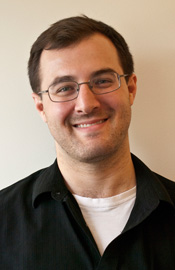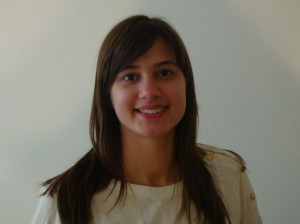 On Tuesday, July 22nd the UR SPIE student chapter will be continuing its Summer Colloquium series with a double header! Please bring your lunch and come listen to our next presentation! Snacks and beverages will be provided.
On Tuesday, July 22nd the UR SPIE student chapter will be continuing its Summer Colloquium series with a double header! Please bring your lunch and come listen to our next presentation! Snacks and beverages will be provided.
Speaker 1: Jordan Leidner
What: Filamentation-Free Broad-Area Laser Design for Efficient Coupling to Single-Mode Fiber
Abstract:Although the quest for high-power, diffraction-limited, semiconductor lasers has arguably met with limited success, the drive for higher brightness diode lasers continues, driven by fiber laser systems. Using tailored refractive-index and injection-current profiles, broad-area laser Beam Propagation Method simulations predict simultaneous suppression of free-carrier-induced self-focusing and far-field mode compression at high powers. Asymmetric gain from tailored current profiles generate unconventional, null-less modes and lead to distributed gain- and loss-filtering mechanisms for increased beam quality output. 5.2-7.7W of spatiotemporally stable (filamentation-free) power enables high-efficiency (70%) coupling into SMF-28, resulting in 3.1-5.5W of fiber-coupled power for EDFA pumping with 0.72 W/A slope efficiency. The concept is shown to be robust against the shape of the profiles, inhomogeneities in both injection current and refractive index, and thermal lensing with proper sub-mount design.
 Speaker 2: Katelynn Sharma
Speaker 2: Katelynn Sharma
What: Measurement of spatial coherence through the shadows of small obscurations
Abstract:We present a simple method to measure the spatial coherence of a partially coherent field by analyzing measurements of the radiant intensity with and without a small, well-characterized obscuration. From these measurements, the coherence of a field can be estimated simultaneously for all pairs of points whose centroid is the same as that of the obstacle. By scanning the obstacle over the test plane, one can recover the full four-dimensional coherence function. In principle, such measurements can be performed without any refractive or diffractive elements, allowing for measurements to be done in higher frequency regimes. In the experimental results presented here, however, the radiant intensity was measured at the back-focal plane of a lens. Our results are highly consistent with theoretical predictions for obscurations whose size is on the order of the coherence width of the source.
What: Filamentation-Free Broad-Area Laser Design for Efficient Coupling to Single-Mode Fiber
Abstract:Although the quest for high-power, diffraction-limited, semiconductor lasers has arguably met with limited success, the drive for higher brightness diode lasers continues, driven by fiber laser systems. Using tailored refractive-index and injection-current profiles, broad-area laser Beam Propagation Method simulations predict simultaneous suppression of free-carrier-induced self-focusing and far-field mode compression at high powers. Asymmetric gain from tailored current profiles generate unconventional, null-less modes and lead to distributed gain- and loss-filtering mechanisms for increased beam quality output. 5.2-7.7W of spatiotemporally stable (filamentation-free) power enables high-efficiency (70%) coupling into SMF-28, resulting in 3.1-5.5W of fiber-coupled power for EDFA pumping with 0.72 W/A slope efficiency. The concept is shown to be robust against the shape of the profiles, inhomogeneities in both injection current and refractive index, and thermal lensing with proper sub-mount design.
 Speaker 2: Katelynn Sharma
Speaker 2: Katelynn SharmaWhat: Measurement of spatial coherence through the shadows of small obscurations
Abstract:We present a simple method to measure the spatial coherence of a partially coherent field by analyzing measurements of the radiant intensity with and without a small, well-characterized obscuration. From these measurements, the coherence of a field can be estimated simultaneously for all pairs of points whose centroid is the same as that of the obstacle. By scanning the obstacle over the test plane, one can recover the full four-dimensional coherence function. In principle, such measurements can be performed without any refractive or diffractive elements, allowing for measurements to be done in higher frequency regimes. In the experimental results presented here, however, the radiant intensity was measured at the back-focal plane of a lens. Our results are highly consistent with theoretical predictions for obscurations whose size is on the order of the coherence width of the source.
When: 7/22/2014 11:30 am – 12:30 pmWhere: Sloan Auditorium (Goergen 101)
